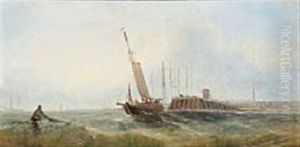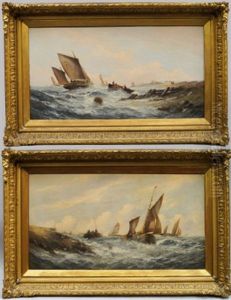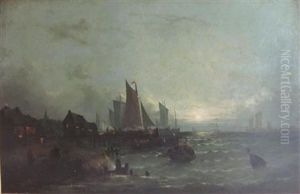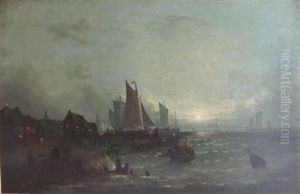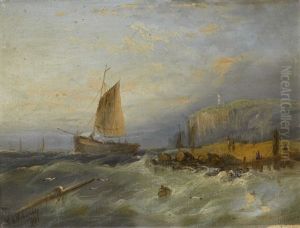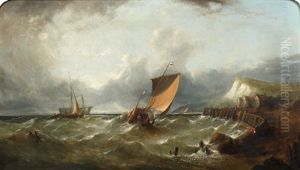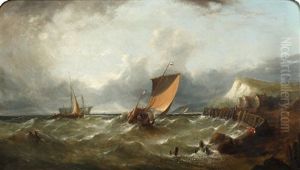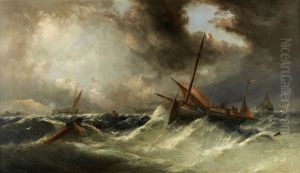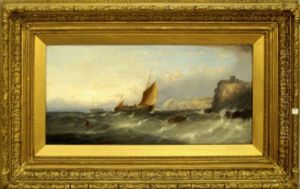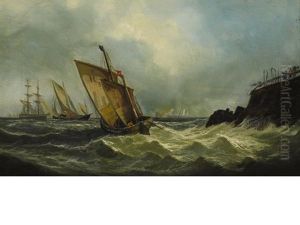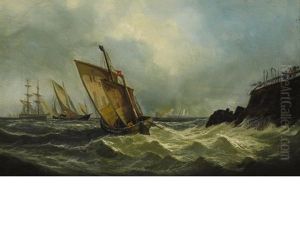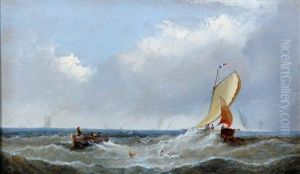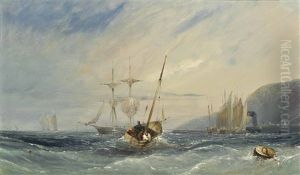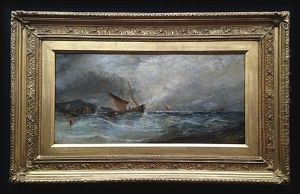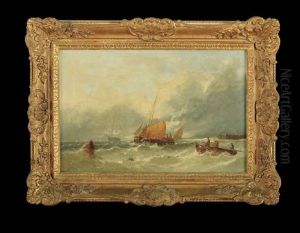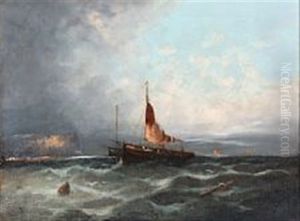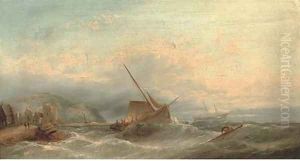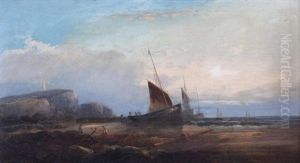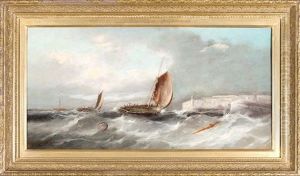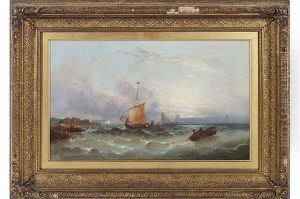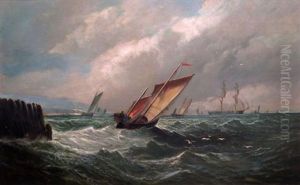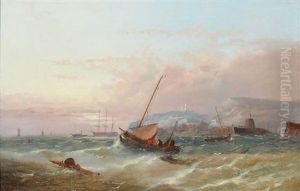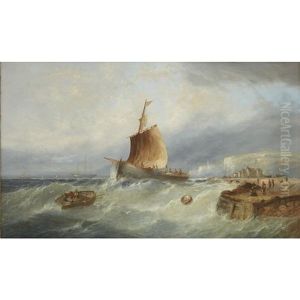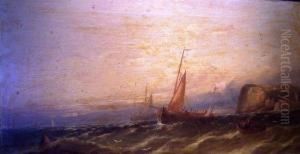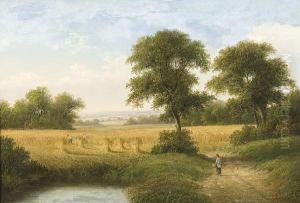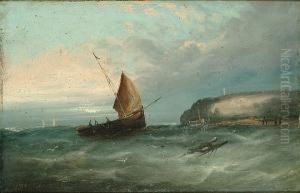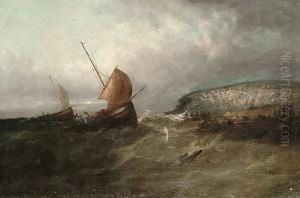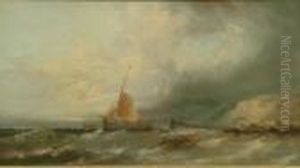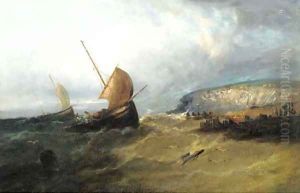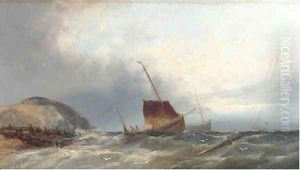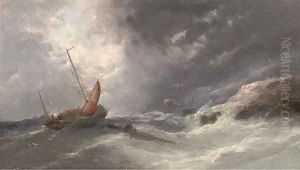William Henry Williamson Paintings
William Henry Williamson was a British artist born in 1820, known for his landscape and marine paintings. While not as widely recognized as some of his contemporaries, Williamson made contributions to the Victorian art scene with his picturesque depictions of the English countryside and coastal areas.
Williamson's artistic journey began in his youth, but details about his early life and education remain scarce. It is known that he was active during the mid to late 19th century, a period that was characterized by the flourishing of landscape painting, influenced by the Romantic movement. Landscape artists of the time were drawn to the beauty of nature and were often inspired by the dramatic and sublime aspects of the environment.
Throughout his career, Williamson exhibited his work at various prestigious institutions, including the British Institution and the Royal Academy of Arts. His paintings often reflected a serene and idyllic view of nature, capturing the changing moods of the sea and the tranquil beauty of rural British settings. Williamson's works were appreciated for their fine detail, atmospheric effects, and the artist's ability to render water with realistic movement and texture.
Williamson's style was typical of the Victorian era, with an emphasis on realism and a penchant for capturing the luminous effects of light on the landscape. While his works did not achieve the fame of some of his peers, they were nonetheless valued by Victorian art collectors and the public for their charm and technical skill.
Unfortunately, like many artists of his time, Williamson's work fell into relative obscurity following his death in 1883. However, his paintings continue to hold a place in the collections of those interested in Victorian art and the landscape genre. They serve as a testament to the era's appreciation of the natural world and the skills of artists who sought to capture its essence on canvas.
